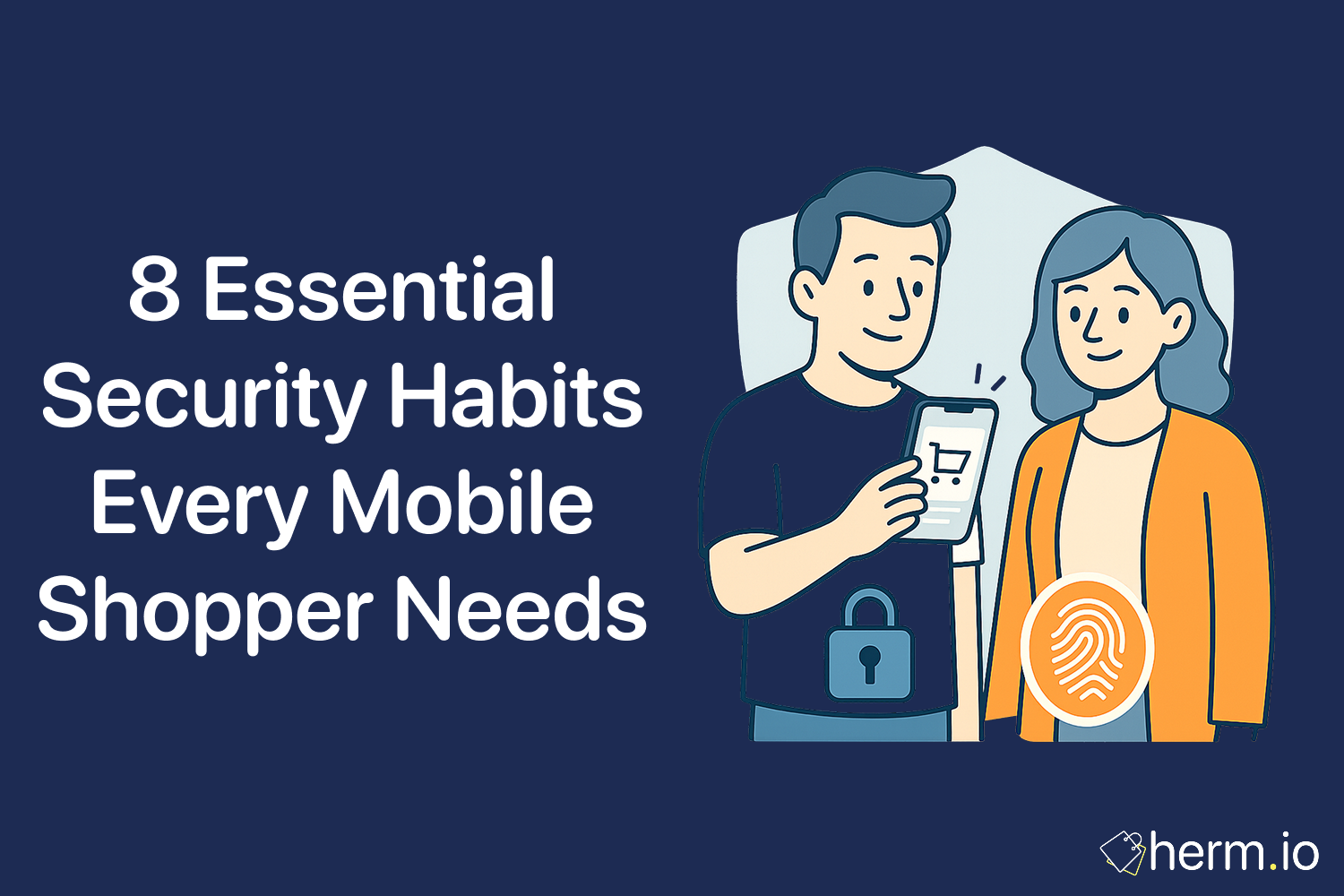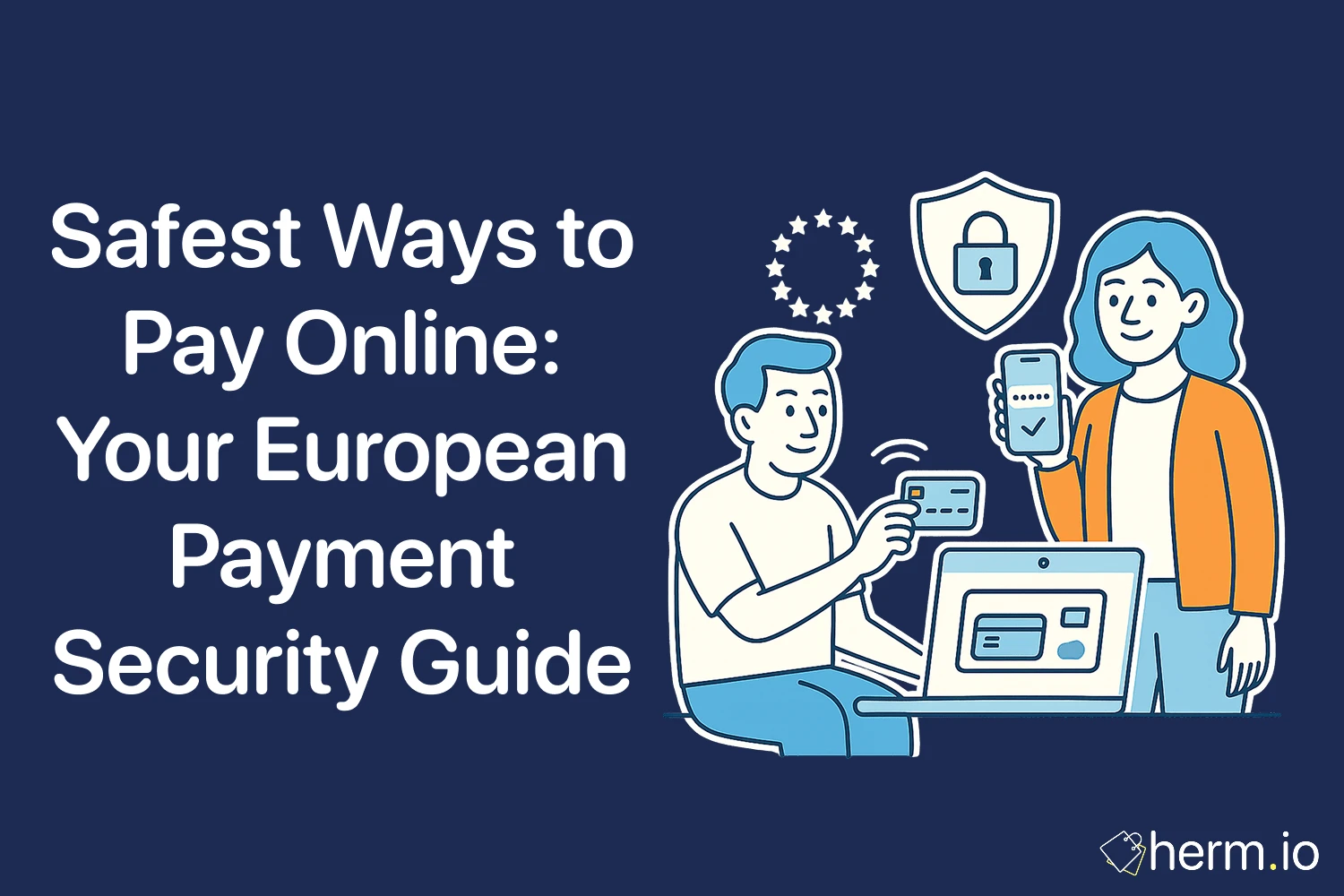
Picture this: you're queuing for coffee, scrolling through your favourite shopping app, when that perfect jacket catches your eye. One tap, payment confirmed, dopamine hit delivered. Mobile shopping has transformed how we buy everything from groceries to gadgets, with global sales jumping over 35% last year alone. Yet this convenience creates new vulnerabilities that fraudsters actively exploit.
From a security perspective, your phone contains more sensitive financial data than your wallet ever did. Building resilient shopping habits requires understanding these risks and implementing practical defences. Think of it as creating digital armour for your pocket-sized shopping companion.
Quick Wins: Implement These Today to Start Shopping Securely
- Download apps only from official stores (App Store or Google Play)
- Enable automatic updates for your operating system and shopping apps
- Set up fingerprint or face recognition for app logins
- Turn on instant transaction alerts for all payment methods
- Review and restrict unnecessary app permissions monthly
1. Download Apps from Verified Sources Only
Building resilient shopping habits requires starting with authentic apps. Cybercriminals create convincing replicas of popular shopping platforms, designed to harvest your login credentials and payment details the moment you enter them.
From a security perspective, official app stores provide your first line of defence. Apple's App Store and Google Play vet applications before publication, significantly reducing malicious software risk. However, even these platforms occasionally host fake apps that slip through initial screening.
When downloading any shopping app, verify the developer information matches the brand's official name. Legitimate retailers display their company name clearly; fraudulent apps often use vague developer details or slight misspellings. For instance, a fake Amazon app might list "Amazone Inc." as the publisher.
Red flags include apps requesting excessive permissions immediately upon installation. A clothing retailer shouldn't need access to your text messages or contacts. Similarly, newly published apps with few reviews or suspiciously enthusiastic five-star ratings warrant caution.
Always access app downloads through direct links from the retailer's official website rather than searching app stores manually. This prevents accidentally selecting imposter apps that might rank highly in search results.
2. Keep Your Digital Shopping Tools Updated
Outdated software creates entry points for attackers who specifically target known vulnerabilities in older app versions. Think of it as leaving your front door unlocked while displaying a sign advertising your absence.
Enable automatic updates for both your device's operating system and installed shopping apps. iOS users can activate this through Settings → App Store → App Updates. Android users should navigate to Google Play → Settings → Network Preferences → Auto-update apps.
Building resilient shopping habits requires treating security updates as urgent maintenance rather than optional improvements. Each patch addresses specific vulnerabilities that criminals actively exploit until fixed.
If automatic updates feel too intrusive, establish a weekly routine for manual updates. Sunday evenings work well for most people; you'll start each shopping week with the latest security protections active.
3. Implement Biometric Authentication
Passwords present fundamental weaknesses in mobile shopping security. Users typically choose memorable but weak passwords or reuse identical credentials across multiple accounts. Biometric authentication eliminates both problems while creating a smoother shopping experience.
From a security perspective, fingerprint and face recognition provide superior protection because biometric data remains stored locally on your device's secure chip. This information never travels to retailer servers, reducing interception risks significantly.
Most modern shopping apps support multiple biometric methods. Enable both fingerprint and face recognition when available, as different lighting conditions or minor injuries might temporarily prevent one method from working.
Configure reasonable timeout settings that balance security with convenience. Requiring biometric authentication every five minutes provides strong protection without creating frustration during extended shopping sessions.
Always maintain a strong backup PIN or passphrase for devices that lack biometric sensors or when sensors fail. This fallback should be unique to your shopping accounts and contain a mix of numbers, letters, and symbols.
4. Avoid Public Wi-Fi for Shopping Transactions
Public networks in cafés, airports, and hotels typically lack encryption, creating opportunities for eavesdropping attacks. Think of it as conducting financial transactions while standing in a crowded room where everyone can hear your conversation.
Building resilient shopping habits requires recognising when you're connected to insecure networks. If your phone displays an unlocked padlock icon beside the Wi-Fi name, that network doesn't encrypt your data.
When you must shop on public Wi-Fi, limit activities to browsing and product research. Save actual purchases for when you're connected to trusted networks or using mobile data.
Consider using your phone's hotspot feature to create a secure connection for other devices. This approach provides better protection than connecting laptops or tablets directly to public networks.
Many shopping apps now detect insecure connections and display warnings. Pay attention to these alerts; they're designed to protect both you and the retailer from potential fraud.
5. Activate Real-Time Transaction Alerts
Instant notifications serve as your early warning system against unauthorised account access. From a security perspective, the faster you detect suspicious activity, the more effectively you can limit potential damage.
Configure alerts across multiple channels: push notifications for immediate awareness, SMS as backup when you've disabled app notifications, and email for permanent records. Each method serves a different purpose in your security framework.
Effective alert messages should specify what happened, when it occurred, and what actions you should take if the activity seems suspicious. Quality notifications include direct links to account security settings and fraud reporting tools.
Review and test your notification settings monthly. Ensure alerts work properly by making a small test purchase and verifying you receive timely notifications across all configured channels.
Building resilient shopping habits requires treating every unexpected alert seriously. Even if the transaction seems legitimate, verify it matches your recent shopping activity before dismissing the notification.
6. Manage App Permissions Strategically
Apps often request access to device functions they don't actually need for core shopping features. From a security perspective, each additional permission creates potential attack surfaces if the app becomes compromised.
Audit your shopping app permissions quarterly. Remove access to contacts, location services, camera, and microphone unless these features provide clear shopping benefits you actively use.
When apps request new permissions, they should explain why that access is necessary. A photo-sharing feature in a retail app legitimately needs camera access; the same app shouldn't require access to your call history.
iOS and Android both allow granular permission control. You can grant camera access for product photos while denying location tracking, creating a customised security profile that meets your shopping needs without unnecessary exposure.
Think of it as creating digital armour with precisely fitted pieces rather than wearing oversized protection that hampers movement without adding security benefits.
7. Consider VPN Protection for Enhanced Privacy
Virtual Private Networks encrypt all traffic between your device and VPN servers, making your shopping data unreadable to potential eavesdroppers on public networks. This protection proves especially valuable when travelling or using shared internet connections.
Quality VPN services implement no-logs policies, ensuring your shopping activity isn't recorded or stored. Look for providers offering AES-256 encryption and automatic kill switches that disconnect internet access if VPN protection fails.
From a security perspective, VPNs add a worthwhile layer of protection without significantly impacting shopping convenience. Modern services maintain fast connection speeds that won't slow down your browsing or purchasing activities.
Free VPN services often compromise privacy by selling user data to third parties. Building resilient shopping habits requires investing in reputable paid services that prioritise customer privacy over advertising revenue.
Consider VPNs essential tools rather than optional extras, particularly if you frequently shop while travelling or using public internet connections.
8. Prepare a Response Plan for Security Incidents
Despite strong preventive measures, security incidents occasionally occur. Having a clear response plan minimises damage and accelerates recovery when problems arise.
Immediately change passwords and enable multi-factor authentication if not already active. Log out all devices through your account security settings to prevent continued unauthorised access.
Contact your bank or card issuer promptly to report suspicious transactions and request new payment cards. Most financial institutions provide 24-hour fraud hotlines specifically for urgent security concerns.
Document incident details carefully: transaction amounts, dates, times, and methods used by fraudsters. This information helps both retailers and financial institutions investigate effectively and prevent similar attacks.
Monitor credit reports and bank statements for several months following any security incident. Criminals sometimes use stolen information weeks or months after initial theft, making ongoing vigilance essential.
FAQ
Is it safe to shop on apps like ASOS or Depop?
Popular shopping apps generally implement strong security measures, but your safety depends largely on following best practices. Download only from official app stores, keep apps updated, use strong authentication methods, and enable transaction alerts. These platforms invest heavily in security, but user vigilance remains essential.
Which security apps do experts recommend for mobile shoppers?
Security professionals typically recommend layered protection: VPN services like NordVPN or ExpressVPN for encrypted connections, password managers such as 1Password or Bitwarden for unique credentials, and mobile security apps like Malwarebytes for malware detection. Choose solutions with transparent privacy policies and minimal battery impact.
How quickly should I report suspicious shopping app activity?
Report immediately—within minutes if possible. Most fraud prevention systems work most effectively when notified quickly. Contact both the shopping app's customer service and your payment provider. Fast reporting often means the difference between minor inconvenience and significant financial loss.
Should I use the same password for multiple shopping apps?
Never use identical passwords across multiple shopping accounts. If one app experiences a data breach, criminals will attempt to access your other accounts using the same credentials. Use a password manager to generate and store unique passwords for each shopping platform you use.

Oliver James Whitmore
I'm a security expert specializing in privacy, systems architecture, and cybersecurity. With experience across startups and large enterprises, I build resilient, user-centric security systems. I bridge the gap between technical capabilities and business value, making complex systems both secure and adaptable.

.png)








.png)

.png)
.png)
.png)